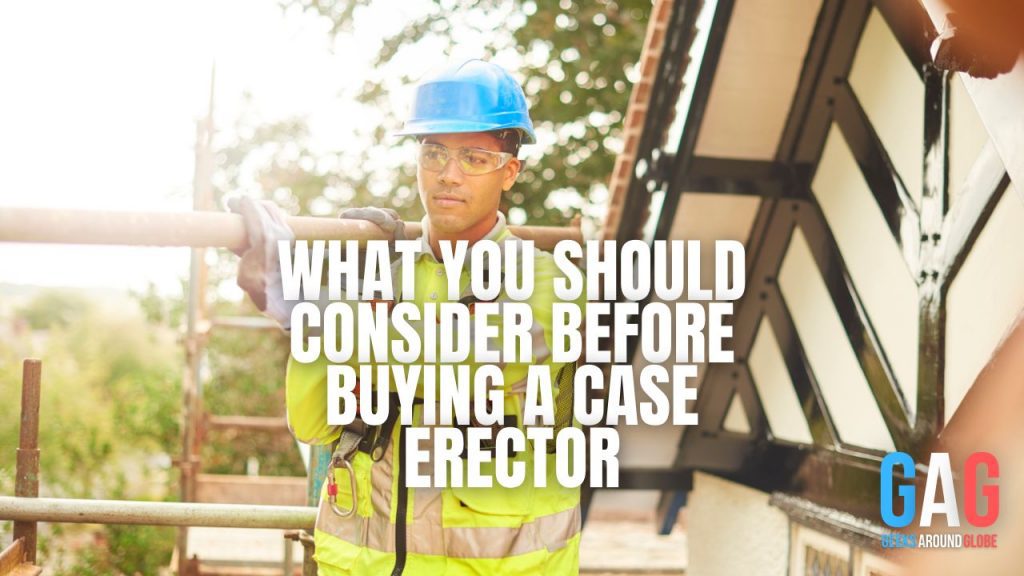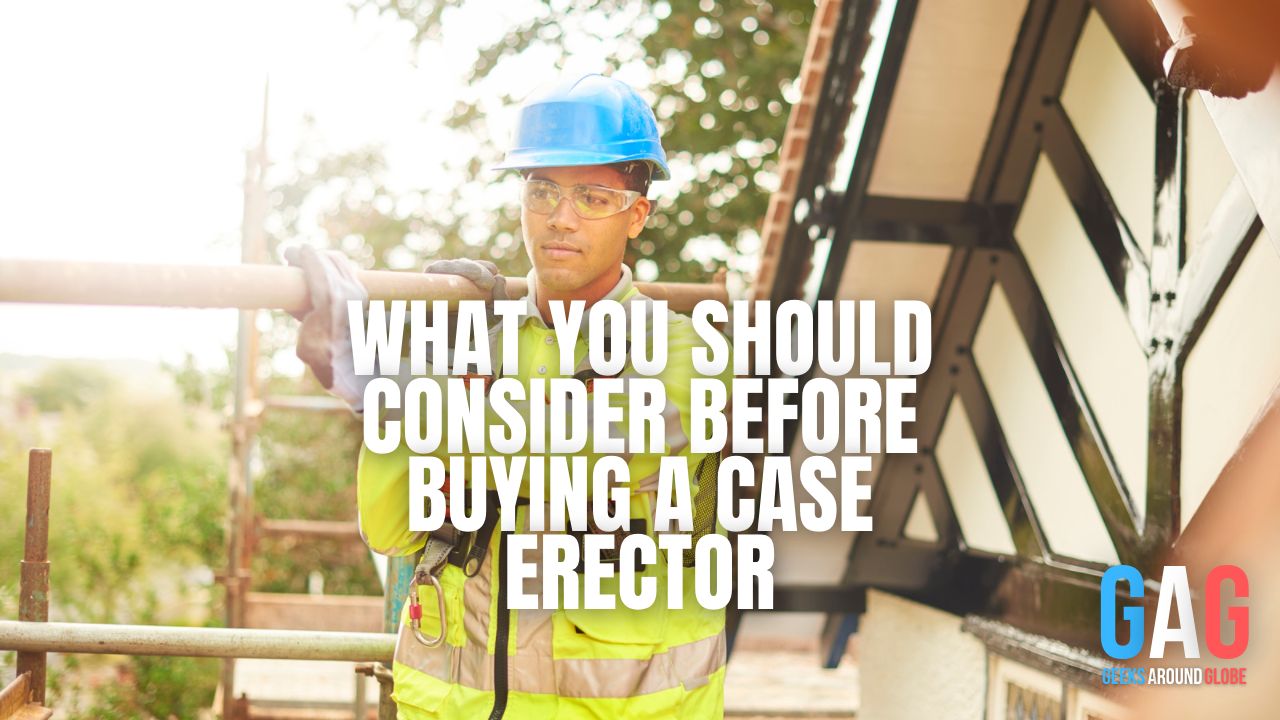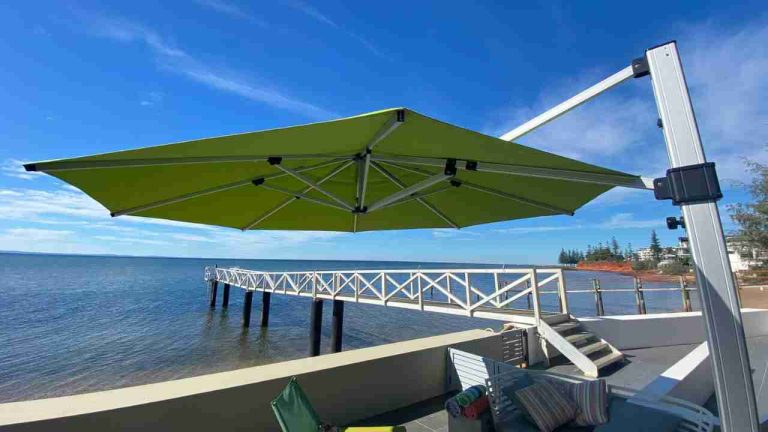
There are a couple of things that you need to consider when it comes to choosing a case erector. Remember that these factors are what can determine the type of case erector that meets your requirements. Besides, they are also determined by your company’s preferences and downstream packaging processes.
Because the case erecting industry consists of many companies that produce lots of case erector variations including an automatic case erector, the factors under consideration can be the first step since they can narrow down your scope and even decrease the number of manufacturers worth considering. This article discusses what you should consider before buying a case erector.
Type of the case
Corrugated case styles, materials, and specifications can be complicated and even unappreciated when it comes to packaging. Most manufacturers only realize their importance after shutting down a line in their factories and spend a lot of resources to troubleshoot a problem that was easily avoidable with some upfront information.
This is why it’s important to know the type of erector case that you are using on your line. It’s worth noting that most case erector manufacturers usually design their cases to deal with regular slotted cases. Therefore, if you decide to use a regular slotted case, there are good chances that you can find many of them on the market. However, if you intend to utilize a full-overlap slotted case, a half-slotted container, or even an exotic case type, then it can be hard to find the right manufacturer to purchase a case erector.
The dimensions of a case erector are also important. Besides the case type, you may realize that many manufacturers are usually flexible with dimensions that are defined by the maximum and minimum dimensions for length. Keep in mind that the length refers to the direction of travel. But you need to consider the box machine models, especially if the case dimensions start reaching the end of the pocket.
The only time you can focus on the small end is at the point when any of the three case erector dimensions go below either 6 inches or 7 inches. In most cases, the large end of your pocket can start at least 16 inches or 17 inches. That said, if the case erector dimensions start affecting any end of range, then you should consider the case size range applicable to each case erector that you are reviewing.
It’s also necessary to consider the quality of corrugated material that you are using. The quality of the corrugated material can affect the performance of the case erector. As you can see, it’s always important to pay close attention to the specifications of the case erector. You should also check the way the manufacturer follows these specifications and the impact of these specifications when the case erector is used in factory-driven environmental conditions. After checking all these factors, then you should choose a case erector design that can deal with what you are utilizing.
The speed
The speed of the case erector is quite straight-forward. Ideally, the case erector must exceed or match the speed of your packaging operations. Therefore, before you purchase a case erector, you need to determine that it’s speed meets your operating conditions.
You should note that you can make fast case erectors to operate slower, though it’s almost impossible to make slow case erectors to run faster. In most cases, the machine designs that are there to help fast case erecting speed tend to be more expensive than a case erector that is designed to operate at slower speeds. Therefore, you will find that fast case erectors can be expensive for low-speed applications and even mid-speed applications.
In most cases, the technology and design of case erectors that need to do at least 5 cases a minute can be different to the one that is designed to do 45 cases a minute. This is because higher speeds need a case erector to have more robust design, precise, and use advanced technology or features. Hence, case erector suppliers that have fast machines tend to work down-market because of their product portfolio. However, it can be harder for a case erector manufacturer to consider a slow and entry-level erector to up-market with higher speeds.
In other words, without drastically modifying the design of the machine, these high-speed case erector manufacturers can usually find it hard to offer competitive prices at lower speeds. So technology helps speed, though you may have to pay for it.
The seal type
The seal type doesn’t usually reduce the number of case erectors that you need to consider. Many case erector manufacturers tend to offer tape-seal erectors as well as some models of glue-seal erectors. The truth is that the seal-type is preferred in factories, though you need to think about the operation and costs associated with it.
You can find glue case erectors that can be more expensive than speed tape erectors. However, glue hoses and nozzles can clog, so you need to do regular maintenance work. Also, glue over spray can sometimes be an issue. When you seal along the whole length of the flap, it can lead to an over spray.
Many experts agree that there are still some benefits when you use glue case erectors. This is because these case erectors provide operational efficiencies that you can’t find in a tape-seal system.
You can also find tape rolls on the market. But some tape rolls can run out of tape quicker than glue tanks. This means that there can be some operational costs linked to having you handle the line regularly once the tape runs out.
A tape system is also unreliable at fast speeds. The bottom line is that this is related to simple chemistry and physics. The faster you can go, the harder it can become for the tape sequence to sync.
At the end of the day, it’s important to remember that choosing the right case erector is simply one of the decisions you have to make. With case erectors, there is right or wrong, so it can hugely depend on your preferences and the needs of your line.







